

Quick list
Basil, Beets, Carrots, Corn, Kale Mix, Radishes, Summer Squash, Tomatoes, Wax Beans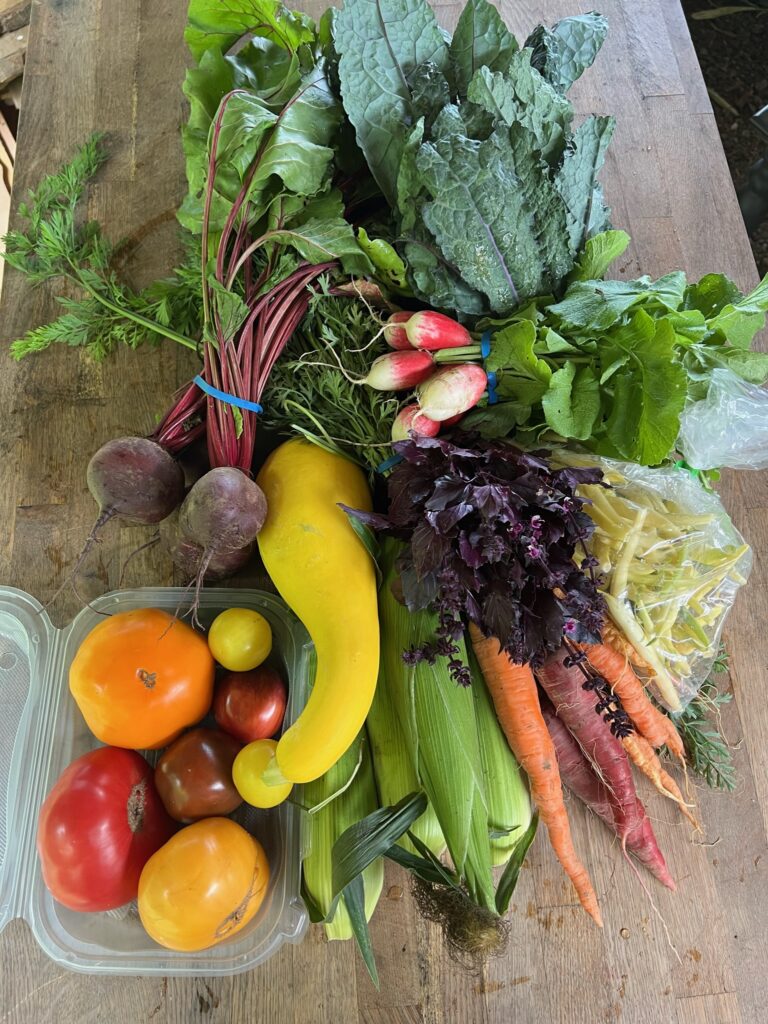
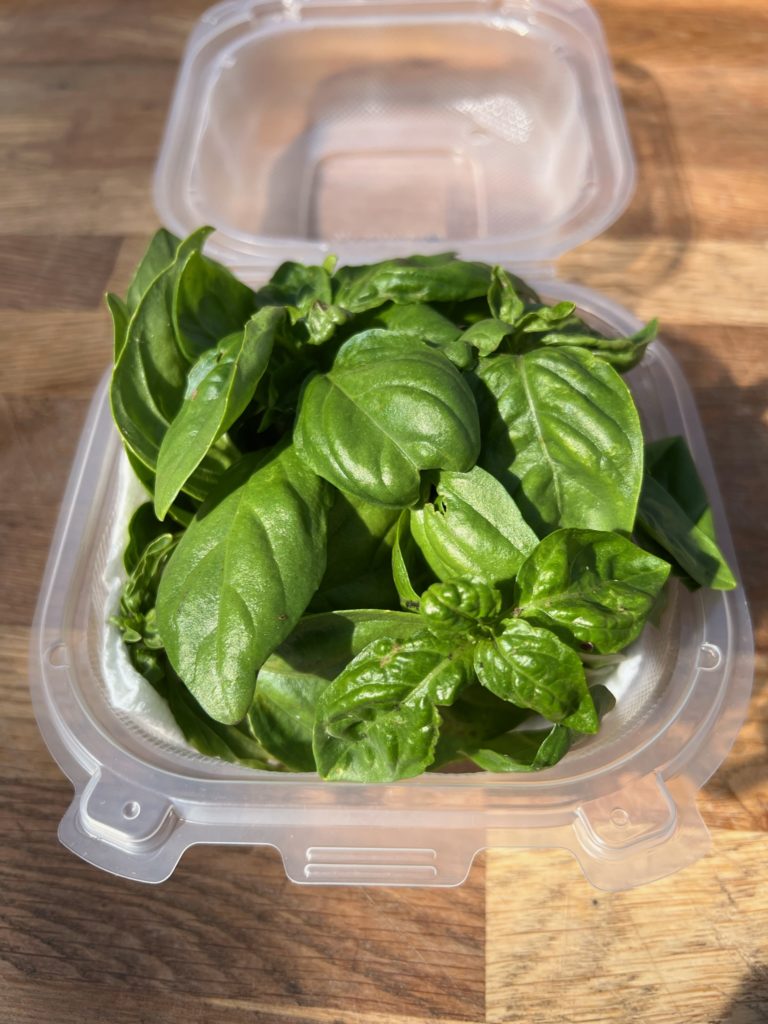
Basil is a highly aromatic herb with a distinct and vibrant flavor. Its leaves are glossy and bright green or purple, and they have a slightly sweet and peppery taste with hints of mint and cloves. Basil is known for its strong fragrance, which is both herbaceous and slightly floral. The scent of basil is often associated with Mediterranean and Italian cuisine, where it is widely used.
In a glass of water: Trim the stems and any leaves that would be under water. Use them first. Place the basil in a glass of water, just like you would with flowers. Store the glass in the refrigerator for up to a week or keep near a window. If you leave it out, you can use the leaves and roots will grow. Change the water every few days. Soon you can plant in a pot and have your own basil plant!
Refrigerator: place basil in a plastic bag with a paper towel or cloth to maintain moisture while allowing airflow.
Rinse. Remove leaves from stems. Chop or use the whole leaf. Eat raw or cooked.
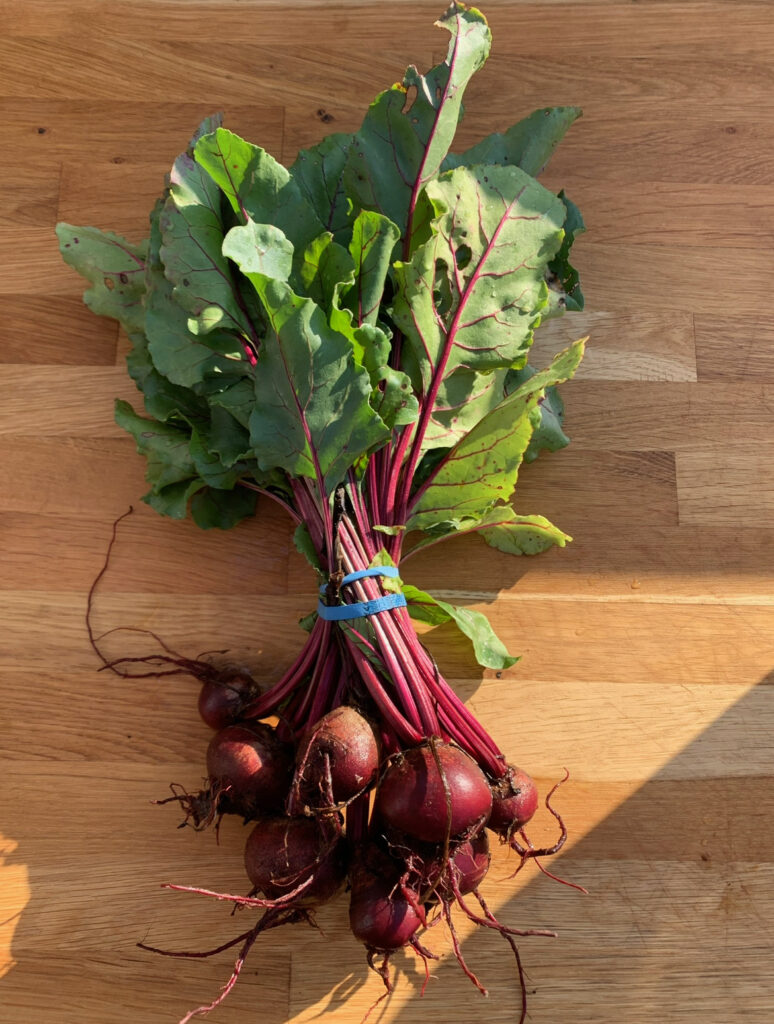
Beets, with their earthy, sweet, and slightly nutty flavor, are root vegetables renowned for their vibrant, jewel-toned flesh that ranges from deep red to golden yellow and even candy-striped varieties. Whether roasted to enhance their natural sugars, boiled and pickled, or grated fresh for salads, beets offer a rich depth of taste and an impressive nutritional profile.
Also, I am trying to find a gentle way to say they will turn your poop red, without talking about poop...
Remove greens for beets. The leaves will continue to draw moisture from the root. Store the beets and greens separately.
It's best to use the greens within a few days for optimal flavor. To store the greens, place unwashed leaves in a container lined with a dry paper towel to absorb excess moisture. Seal the container loosely to allow for some airflow. Store in the fridge. Here it will stay fresh for a few days.
Beet roots can keep for several weeks, sometimes even months, when stored in the fridge.
Rinse. The whole beet is edible, leaves and root. Eat raw or cooked. If the leaves start to wilt, you can revive them by soaking in ice water for a few minutes before patting them dry and using as desired.
Large beets can benefit from being peeled. We don't bother.
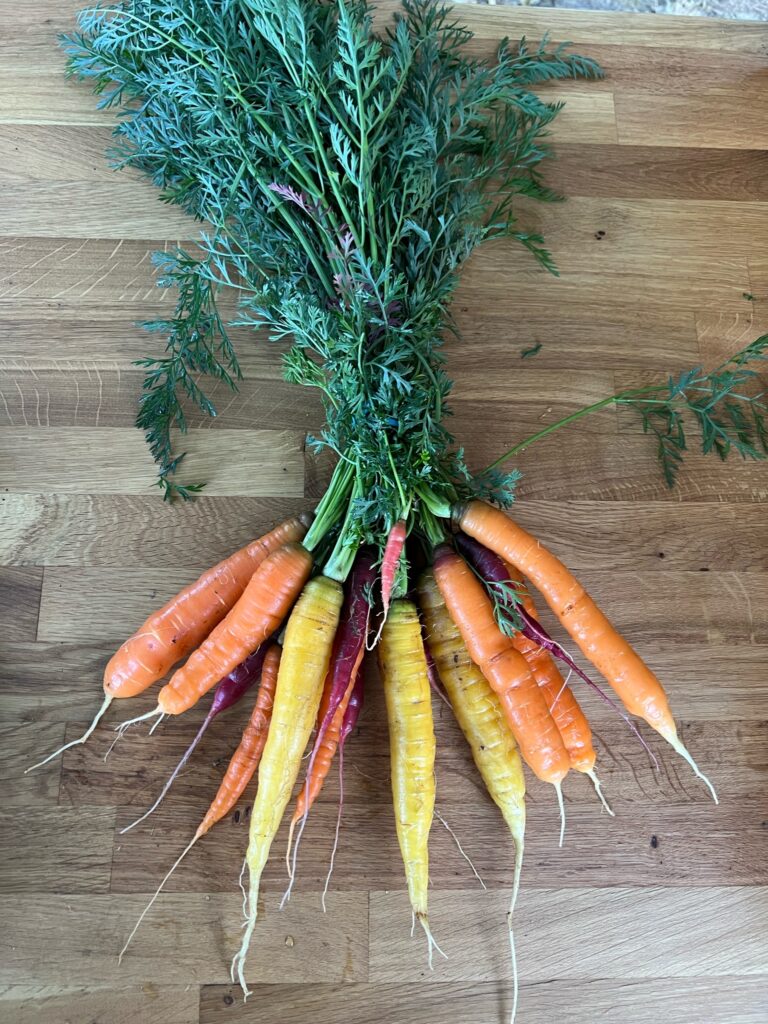
Carrots are vibrant root vegetables known for their distinct crunchy texture and sweet, earthy flavor. They come in various colors, including orange, purple, yellow, and white. Carrots have a satisfyingly crisp bite and a subtly sweet taste that is enhanced when cooked. Whether enjoyed raw as a snack, grated into salads, roasted to bring out their natural sweetness, or used as a flavorful ingredient in soups, stews, and stir-fries, carrots provide a versatile and nutritious addition to a wide range of dishes.
We love growing every color of carrot! Atomic reds might be our favorite. They are the red carrots. Which color is your favorite?
Keep in the fridge. If you plan on storing them longer than a week, remove the greens and the carrots will stay crisp.
Rinse. The whole carrot is edible, including the leaves and root. Carrots can be enjoyed raw or cooked. If the leaves start to wilt, you can revive them by soaking them in ice water for a few minutes, then pat them dry and use as desired.
Freezing: Peel and slice or chop the carrots into desired sizes. Blanch them by briefly boiling in water and then plunging them into ice water to stop the cooking process. Drain well and place the blanched carrots in freezer-safe bags or containers. Label and date them before placing them in the freezer. Frozen carrots can be used in cooked dishes such as soups, stews, and stir-fries.
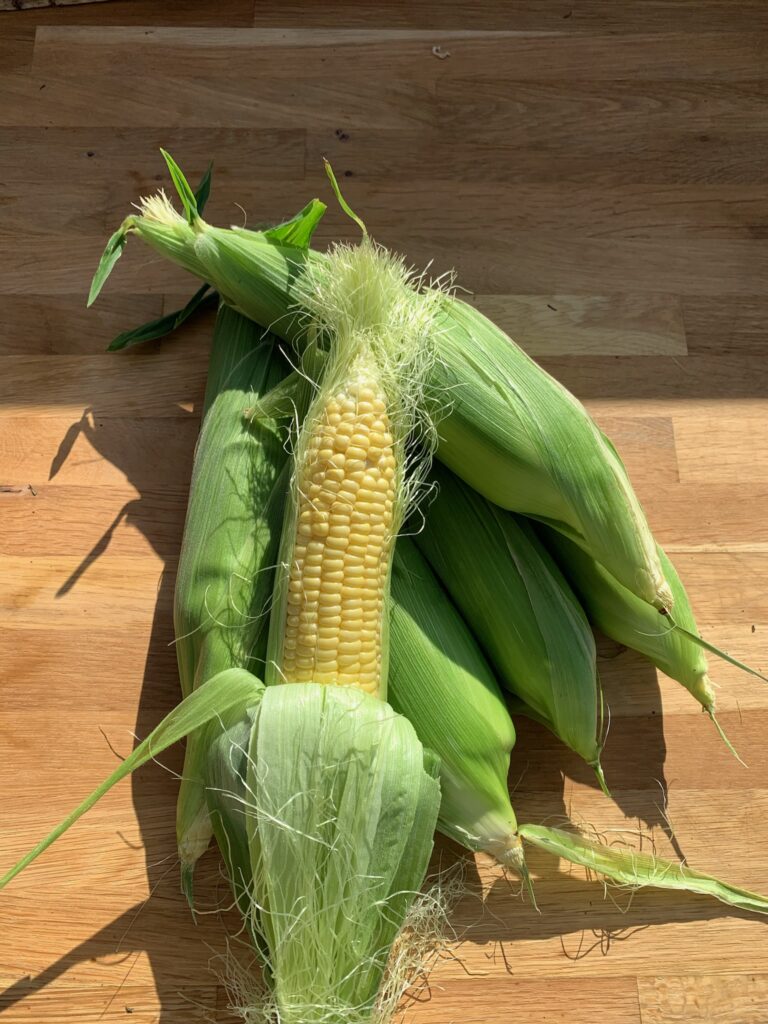
Corn on the cob is a quintessential summer treat, featuring tender, sweet kernels tightly nestled on a round cob. With a vibrant golden hue, each cob boasts a delightful mix of flavor and texture. Grilled, boiled, or steamed, corn on the cob exudes a satisfying crunch and bursts of sugary juice with every bite. Often adorned with a drizzle of butter, a sprinkle of salt, and a touch of herbs.
To ensure the best flavor and texture, it's recommended to use fresh corn on the cob right away. If you plan to wait, store the corn in a cool, well-ventilated place. Avoid exposing it to direct sunlight or high temperatures, as this can cause the kernels to dry out and lose their sweetness. If the husks are still intact, they can help protect the corn. If not, you can wrap the corn in a damp paper towel and place it in a plastic bag to prevent moisture loss. Using fresh corn promptly will provide you with the optimal taste and crunch that this seasonal delight offers.
Remove husks, unless you are grilling. Cook on the cob or remove the kernels.
This is our favorite tool to remove the kernels! Works great when raw or cooked.
Freezing: Start by blanching the corn in boiling water for a few minutes, then quickly transferring it to an ice bath to cool. Once cooled, cut the kernels off the cob and pack them into airtight freezer bags or containers. Label and date them before placing them in the freezer. Frozen corn can be used in soups, stews, casseroles, or as a side dish.
How to use
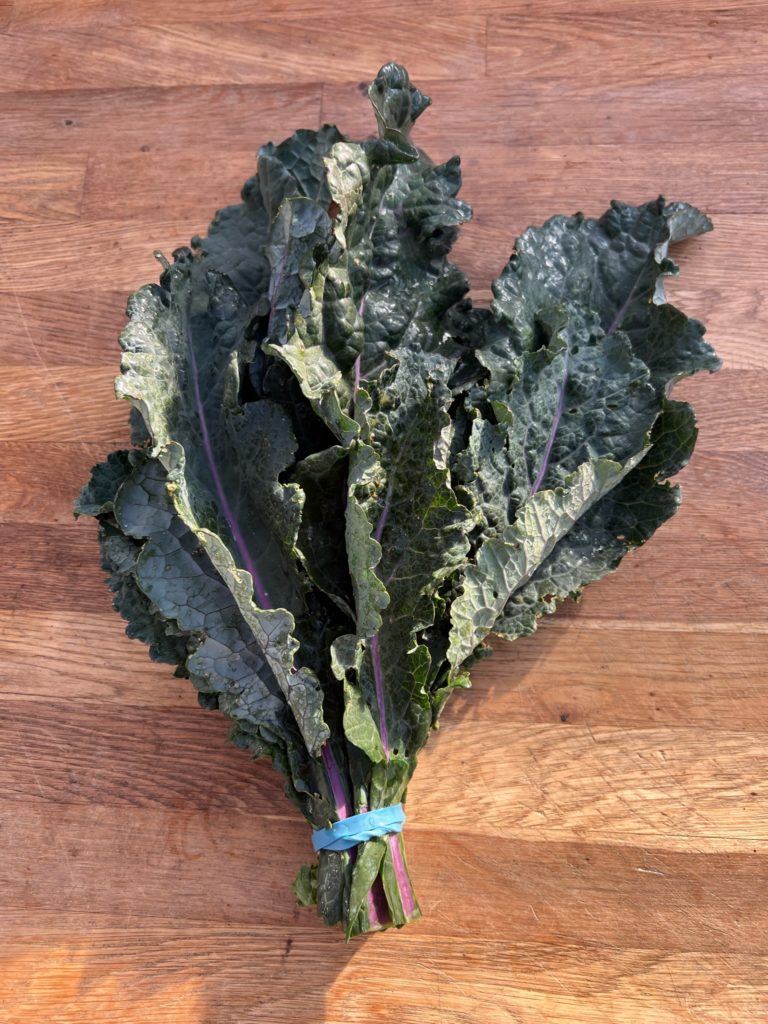
Kale, a leafy green vegetable renowned for its robust and earthy flavor, belongs to the Brassica family and stands as a nutritional powerhouse. Its slightly bitter, peppery taste lends itself well to a multitude of culinary applications, from hearty salads and smoothies to sautés and soups.
Rinse. Remove from stems because leaves cook faster. Chop or use whole leaves. Eat raw or cooked. If the kale starts to wilt, you can revive it by soaking the leaves in ice water for a few minutes before patting them dry and using as desired.
To store kale, place unwashed leaves in a perforated plastic bag or a container lined with a dry paper towel to absorb excess moisture. Seal the bag or container loosely to allow for some airflow. Store the bag in the refrigerator's crisper drawer, where it will stay fresh for a few days.
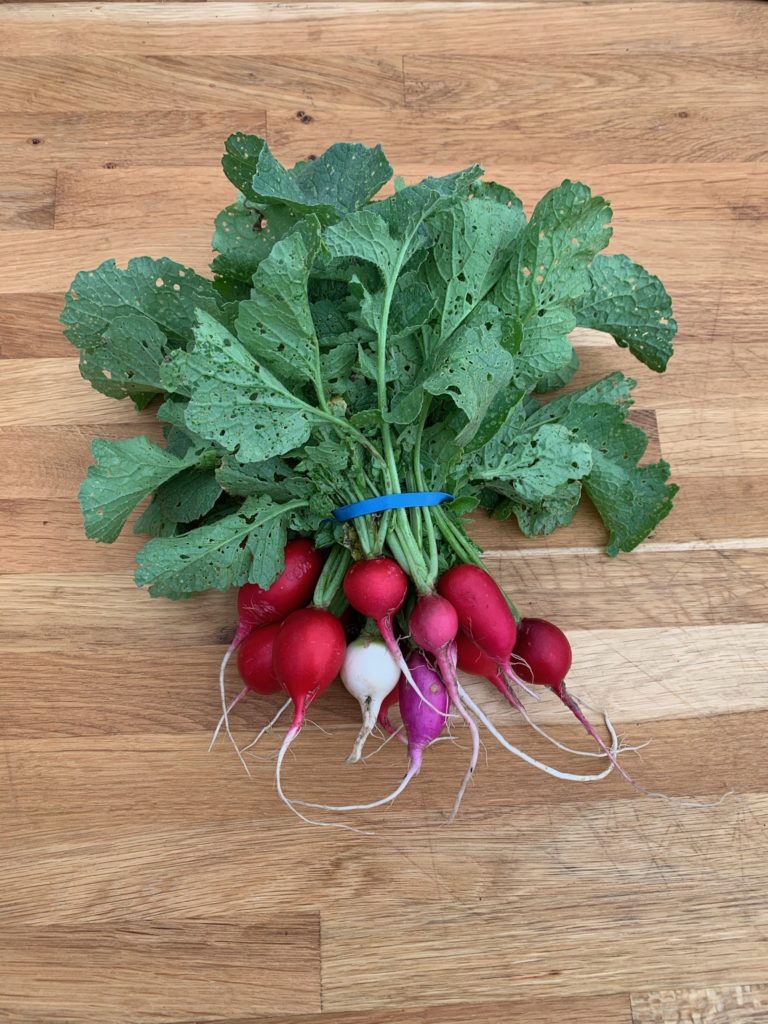
Radishes are small root vegetables known for their crisp texture and slightly peppery flavor. The flesh of radishes is typically firm, crunchy, and juicy, while the skin can range from smooth to slightly rough. They can be enjoyed raw as a snack, sliced and added to vegetable platters, or used as a garnish. Radishes also offer versatility in cooking, as they can be roasted, sautéed, or pickled to enhance their natural flavors. Rinse. Eat raw or cooked.
Remove greens for radishes. The leaves will continue to draw moisture from the root. Store the radishes and greens separately.
It's best to use the greens within a few days for optimal flavor. To store the greens, place unwashed leaves in a container lined with a dry paper towel to absorb excess moisture. Seal the container loosely to allow for some airflow. Store in the fridge. Here it will stay fresh for a few days.
Radish roots can keep for several weeks, sometimes even months, when stored in the fridge.
Rinse. The whole radish is edible, leaves and root. Eat raw or cooked. If the leaves start to wilt, you can revive them by soaking in ice water for a few minutes before patting them dry and using as desired.
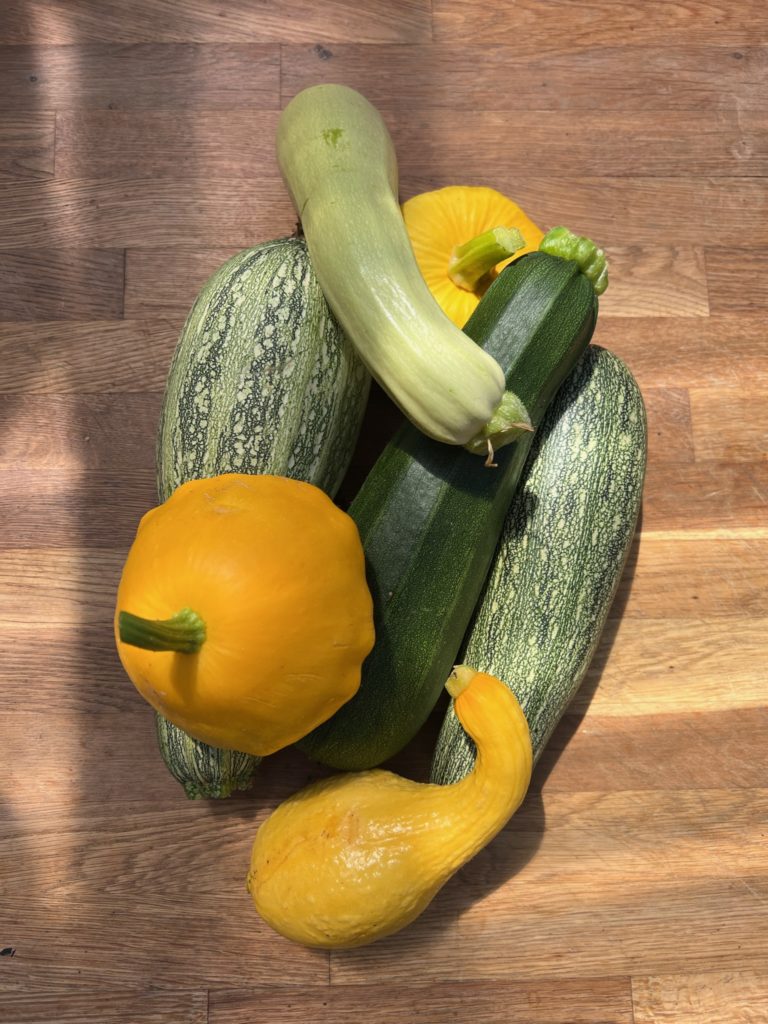
Summer squash refers to a variety of tender, edible gourds that are harvested during the summer months. They typically have a vibrant, yellow or green skin and a mild, slightly sweet flavor. Summer squash comes in various shapes, including elongated, cylindrical zucchini and round or bulbous varieties like pattypan and yellow crookneck squash. The flesh is tender and succulent, with a delicate texture that holds up well in both raw and cooked preparations.
Rinse. Eat raw or cooked.
Handle gently. The skin is thin and fragile. Keep on the counter and use within a week. If you aren't going to use them right away keep in the refrigerator.
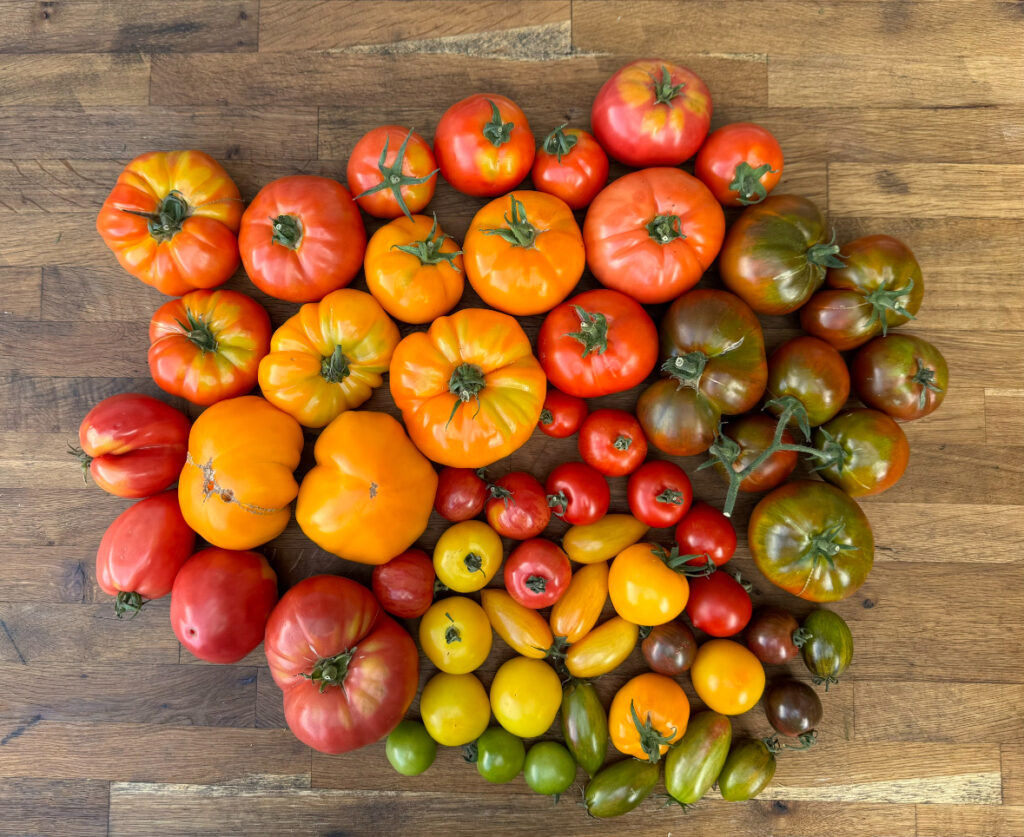
Tomatoes, a widely cherished fruit often treated as a vegetable, encompass a remarkable spectrum of colors, sizes, and flavors. Their smooth, glossy exteriors encompass a juicy and fleshy interior, bursting with a sweet and tangy taste. Ranging from vibrant reds to yellows, oranges. Enjoy raw in salads, sandwiches, or salsas, or transformed through cooking into sauces, soups, and stews.
Keep ripe, uncut tomatoes at room temperature, away from direct sunlight, in a single layer with the stem side up to prevent bruising. If tomatoes are not fully ripe, place them in a paper bag at room temperature to encourage ripening. Once fully ripe, you can transfer them to the refrigerator's vegetable drawer, but allow them to return to room temperature before consuming for optimal flavor. Avoid storing tomatoes in airtight containers, as this can lead to moisture buildup and affect their quality. Use tomatoes within a few days of ripening for the best taste and texture.
Rinse. Eat raw or cooked.
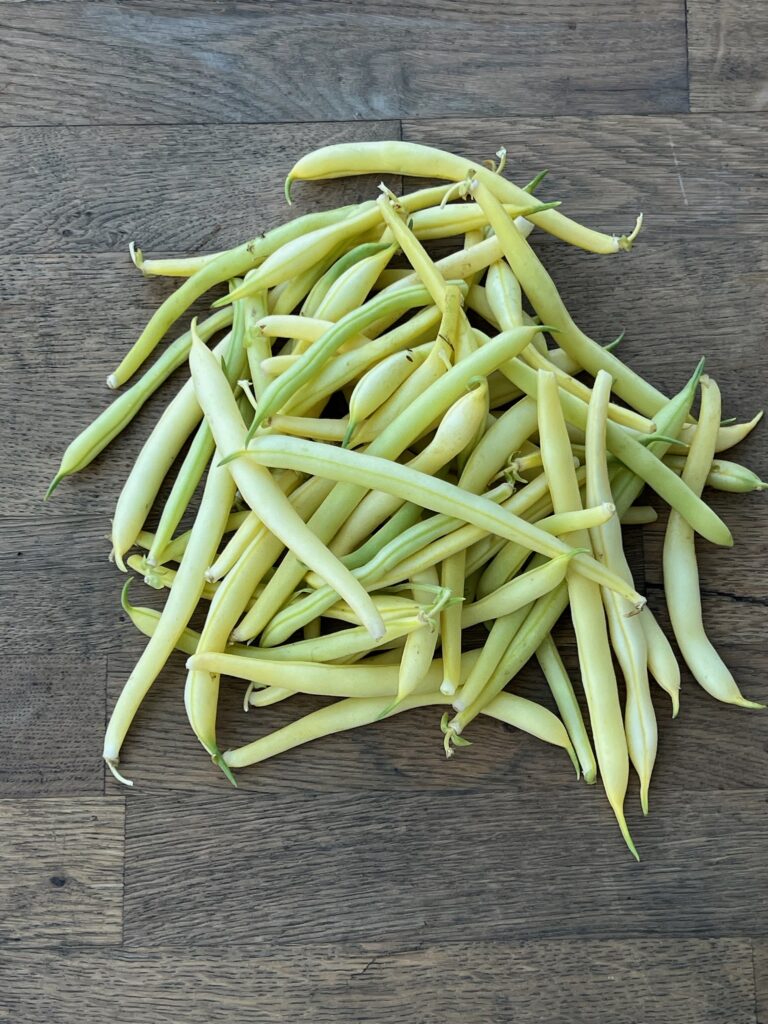
Wax beans, also known as yellow beans or butter beans, are slender, elongated pods that are harvested when young and tender. They have a smooth, waxy texture with a slightly sweeter and milder flavor compared to green beans. Wax beans typically have a bright yellow color, and like their green counterparts, they are widely used in various cuisines across the globe. Whether sautéed, steamed, roasted, or included in salads, stir-fries, or casseroles, wax beans offer a delightful and versatile addition to meals.
Wax beans should be used sooner versus later. Place the unwashed wax beans in a bag or a container lined with a dry paper towel to absorb excess moisture. Leave the bag slightly open or use a container with ventilation to allow for some airflow. Store the wax beans in the refrigerator's crisper drawer, where they will stay fresh for up to a week. It's best to avoid washing the beans until you're ready to use them, as excess moisture can lead to spoilage.
These are stringless beans. That means you only need to remove the stem end to enjoy. Rinse. Eat raw or cooked.
Freezing: Blanch the wax beans by briefly boiling them in water, then transferring them to an ice bath to cool. Drain well and place the blanched beans in freezer-safe bags or containers. Label and date them before placing them in the freezer. Frozen wax beans can be used in various cooked dishes such as soups, stews, and stir-fries.